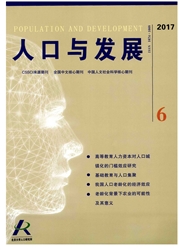

 中文摘要:
中文摘要:
染色体片断替换线在几个试验性的模型被创造了,包括许多植物和动物种类,并且是为基因分析的有用工具并且复杂特点印射。传统的 t 测试通常被使用识别在一个染色体片断以内被包含估计 QTL 效果的一个量的特点地点(QTL ) 。然而,当前的方法不能揭开复杂特点的全部基因结构。例如,当前的方法不能在主要效果和 epistatic 效果之间区分。在这份报纸,一个线性 epistatic 模型被构造把复杂特点。首先,所有长代替的片断被划分成重叠的小箱,并且每小箱被认为一个唯一的独立变量。为复杂特点的基因模型然后被构造。当考虑所有可能的主要效果和 epistatic 效果时,线性模型罐头的尺寸变得极其高。因此,经由逐步的回归(Bin-REG ) 的可变选择在现在的学习为 epistatic QTL 分析被建议。而且,我们测试了使用估计 epistatic 的算法完成的 LASSO (最不绝对的收缩和选择操作符)的可行性,检验了充分贝叶斯的 SSVS (随机的搜索变量选择)途径,测试了实验 Bayes ( E-BAYES )方法,并且评估了惩罚可能性的(刑罚)为印射 epistatic QTL 的方法。模拟研究建议了那上述所有方法,排除 LASSO 和刑罚的途径,令人满意地表现了。Bin-REG 方法看起来以估计位置和效果超过所有另外的方法。
 英文摘要:
英文摘要:
Chromosome segment substitution lines have been created in several experimental models,including many plant and animal species,and are useful tools for the genetic analysis and mapping of complex traits.The traditional t-test is usually applied to identify a quantitative trait locus (QTL) that is contained within a chromosome segment to estimate the QTL’s effect.However,current methods cannot uncover the entire genetic structure of complex traits.For example,current methods cannot distinguish between main effects and epistatic effects.In this paper,a linear epistatic model was constructed to dissect complex traits.First,all the long substituted segments were divided into overlapping small bins,and each small bin was considered a unique independent variable.The genetic model for complex traits was then constructed.When considering all the possible main effects and epistatic effects,the dimensions of the linear model can become extremely high.Therefore,variable selection via stepwise regression (Bin-REG) was proposed for the epistatic QTL analysis in the present study.Furthermore,we tested the feasibility of using the LASSO (least absolute shrinkage and selection operator) algorithm to estimate epistatic effects,examined the fully Bayesian SSVS (stochastic search variable selection) approach,tested the empirical Bayes (E-BAYES) method,and evaluated the penalized likelihood (PENAL) method for mapping epistatic QTLs.Simulation studies suggested that all of the above methods,excluding the LASSO and PENAL approaches,performed satisfactorily.The Bin-REG method appears to outperform all other methods in terms of estimating positions and effects.
 同期刊论文项目
同期刊论文项目
 同项目期刊论文
同项目期刊论文
 期刊信息
期刊信息
